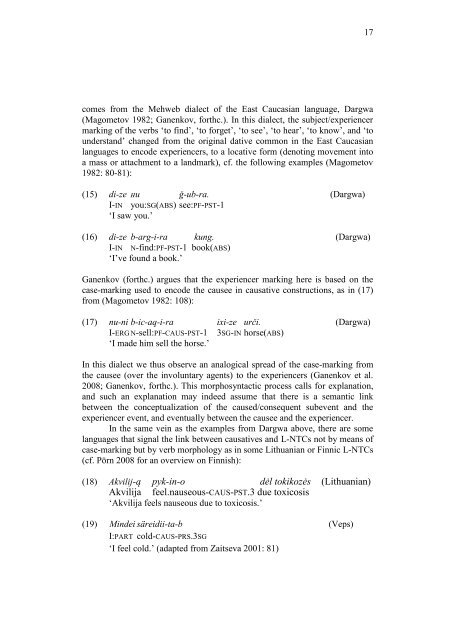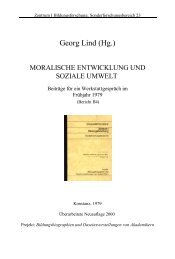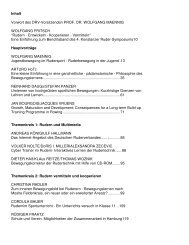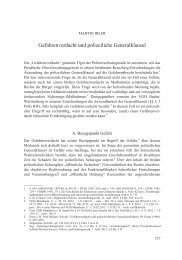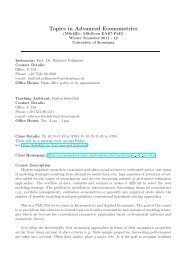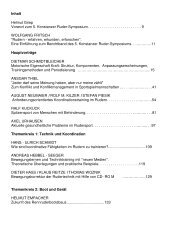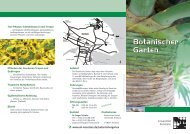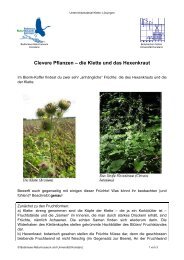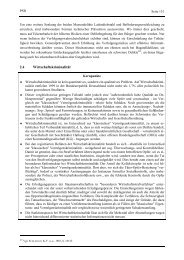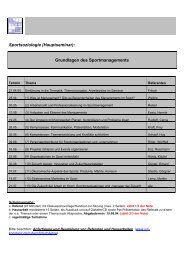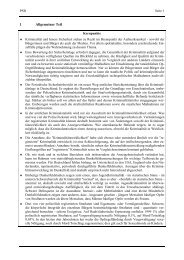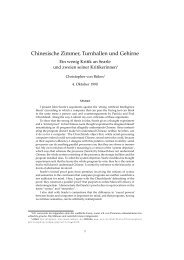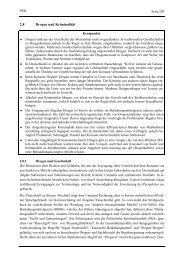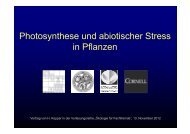Subjects and non-subjects in constructions
Subjects and non-subjects in constructions
Subjects and non-subjects in constructions
Create successful ePaper yourself
Turn your PDF publications into a flip-book with our unique Google optimized e-Paper software.
17<br />
comes from the Mehweb dialect of the East Caucasian language, Dargwa<br />
(Magometov 1982; Ganenkov, forthc.). In this dialect, the subject/experiencer<br />
mark<strong>in</strong>g of the verbs „to f<strong>in</strong>d‟, „to forget‟, „to see‟, „to hear‟, „to know‟, <strong>and</strong> „to<br />
underst<strong>and</strong>‟ changed from the orig<strong>in</strong>al dative common <strong>in</strong> the East Caucasian<br />
languages to encode experiencers, to a locative form (denot<strong>in</strong>g movement <strong>in</strong>to<br />
a mass or attachment to a l<strong>and</strong>mark), cf. the follow<strong>in</strong>g examples (Magometov<br />
1982: 80-81):<br />
(15) di-ze ʜu ǧ-ub-ra. (Dargwa)<br />
I-IN you:SG(ABS) see:PF-PST-1<br />
„I saw you.‟<br />
(16) di-ze b-arg-i-ra kung. (Dargwa)<br />
I-IN N-f<strong>in</strong>d:PF-PST-1 book(ABS)<br />
„I‟ve found a book.‟<br />
Ganenkov (forthc.) argues that the experiencer mark<strong>in</strong>g here is based on the<br />
case-mark<strong>in</strong>g used to encode the causee <strong>in</strong> causative <strong>constructions</strong>, as <strong>in</strong> (17)<br />
from (Magometov 1982: 108):<br />
(17) nu-ni b-ic-aq-i-ra ixi-ze urči. (Dargwa)<br />
I-ERG N-sell:PF-CAUS-PST-1 3SG-IN horse(ABS)<br />
„I made him sell the horse.‟<br />
In this dialect we thus observe an analogical spread of the case-mark<strong>in</strong>g from<br />
the causee (over the <strong>in</strong>voluntary agents) to the experiencers (Ganenkov et al.<br />
2008; Ganenkov, forthc.). This morphosyntactic process calls for explanation,<br />
<strong>and</strong> such an explanation may <strong>in</strong>deed assume that there is a semantic l<strong>in</strong>k<br />
between the conceptualization of the caused/consequent subevent <strong>and</strong> the<br />
experiencer event, <strong>and</strong> eventually between the causee <strong>and</strong> the experiencer.<br />
In the same ve<strong>in</strong> as the examples from Dargwa above, there are some<br />
languages that signal the l<strong>in</strong>k between causatives <strong>and</strong> L-NTCs not by means of<br />
case-mark<strong>in</strong>g but by verb morphology as <strong>in</strong> some Lithuanian or F<strong>in</strong>nic L-NTCs<br />
(cf. Pörn 2008 for an overview on F<strong>in</strong>nish):<br />
(18) Akvilij-ą pyk-<strong>in</strong>-o dėl tokikozės (Lithuanian)<br />
Akvilija feel.nauseous-CAUS-PST.3 due toxicosis<br />
„Akvilija feels nauseous due to toxicosis.‟<br />
(19) M<strong>in</strong>dei säreidii-ta-b (Veps)<br />
I:PART cold-CAUS-PRS.3SG<br />
‘I feel cold.’ (adapted from Zaitseva 2001: 81)


